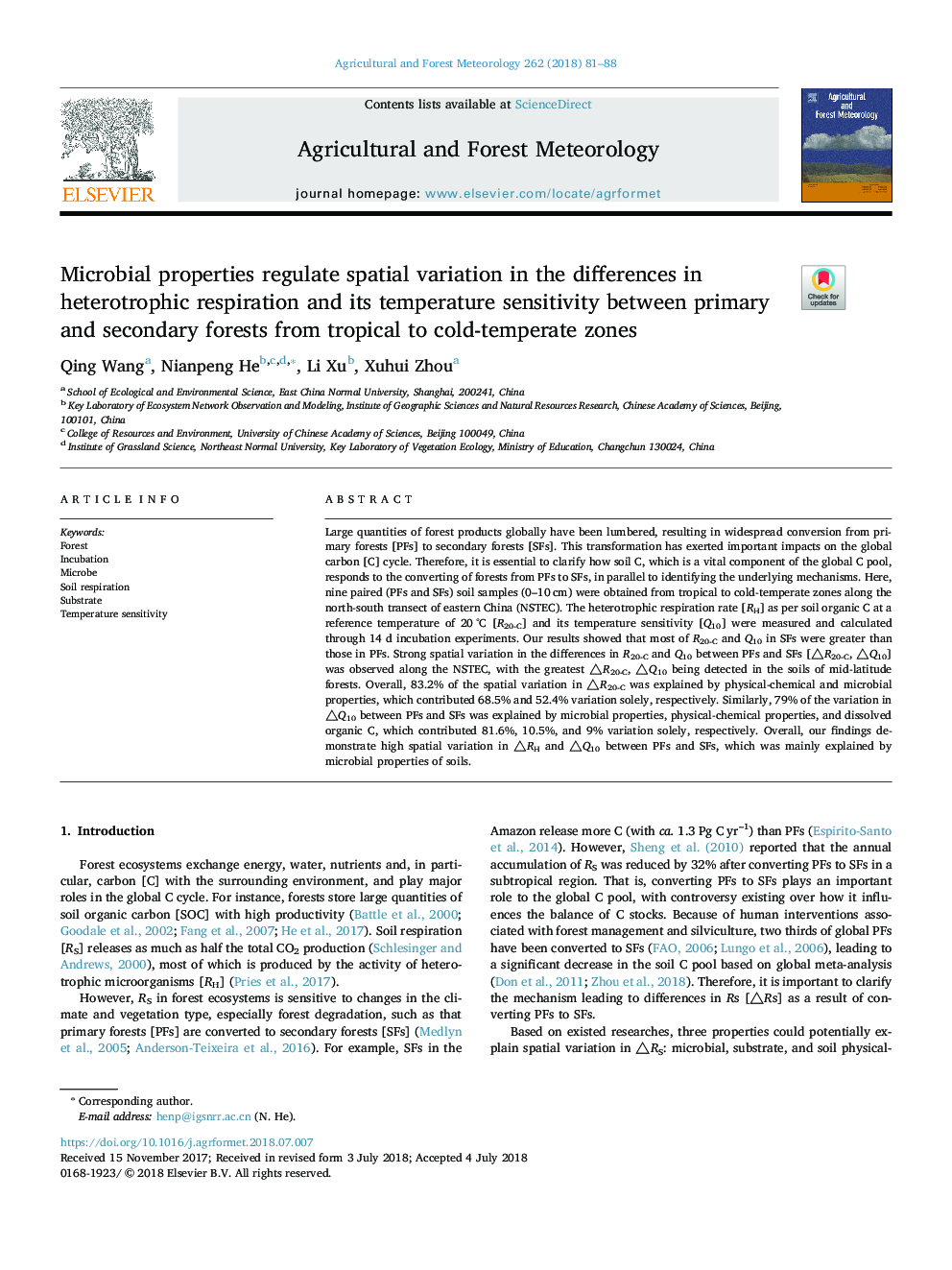| Article ID | Journal | Published Year | Pages | File Type |
|---|---|---|---|---|
| 6536567 | Agricultural and Forest Meteorology | 2018 | 8 Pages |
Abstract
Large quantities of forest products globally have been lumbered, resulting in widespread conversion from primary forests [PFs] to secondary forests [SFs]. This transformation has exerted important impacts on the global carbon [C] cycle. Therefore, it is essential to clarify how soil C, which is a vital component of the global C pool, responds to the converting of forests from PFs to SFs, in parallel to identifying the underlying mechanisms. Here, nine paired (PFs and SFs) soil samples (0-10â¯cm) were obtained from tropical to cold-temperate zones along the north-south transect of eastern China (NSTEC). The heterotrophic respiration rate [RH] as per soil organic C at a reference temperature of 20â¯Â°C [R20-C] and its temperature sensitivity [Q10] were measured and calculated through 14 d incubation experiments. Our results showed that most of R20-C and Q10 in SFs were greater than those in PFs. Strong spatial variation in the differences in R20-C and Q10 between PFs and SFs [â³R20-C, â³Q10] was observed along the NSTEC, with the greatest â³R20-C, â³Q10 being detected in the soils of mid-latitude forests. Overall, 83.2% of the spatial variation in â³R20-C was explained by physical-chemical and microbial properties, which contributed 68.5% and 52.4% variation solely, respectively. Similarly, 79% of the variation in â³Q10 between PFs and SFs was explained by microbial properties, physical-chemical properties, and dissolved organic C, which contributed 81.6%, 10.5%, and 9% variation solely, respectively. Overall, our findings demonstrate high spatial variation in â³RH and â³Q10 between PFs and SFs, which was mainly explained by microbial properties of soils.
Related Topics
Physical Sciences and Engineering
Earth and Planetary Sciences
Atmospheric Science
Authors
Qing Wang, Nianpeng He, Li Xu, Xuhui Zhou,
